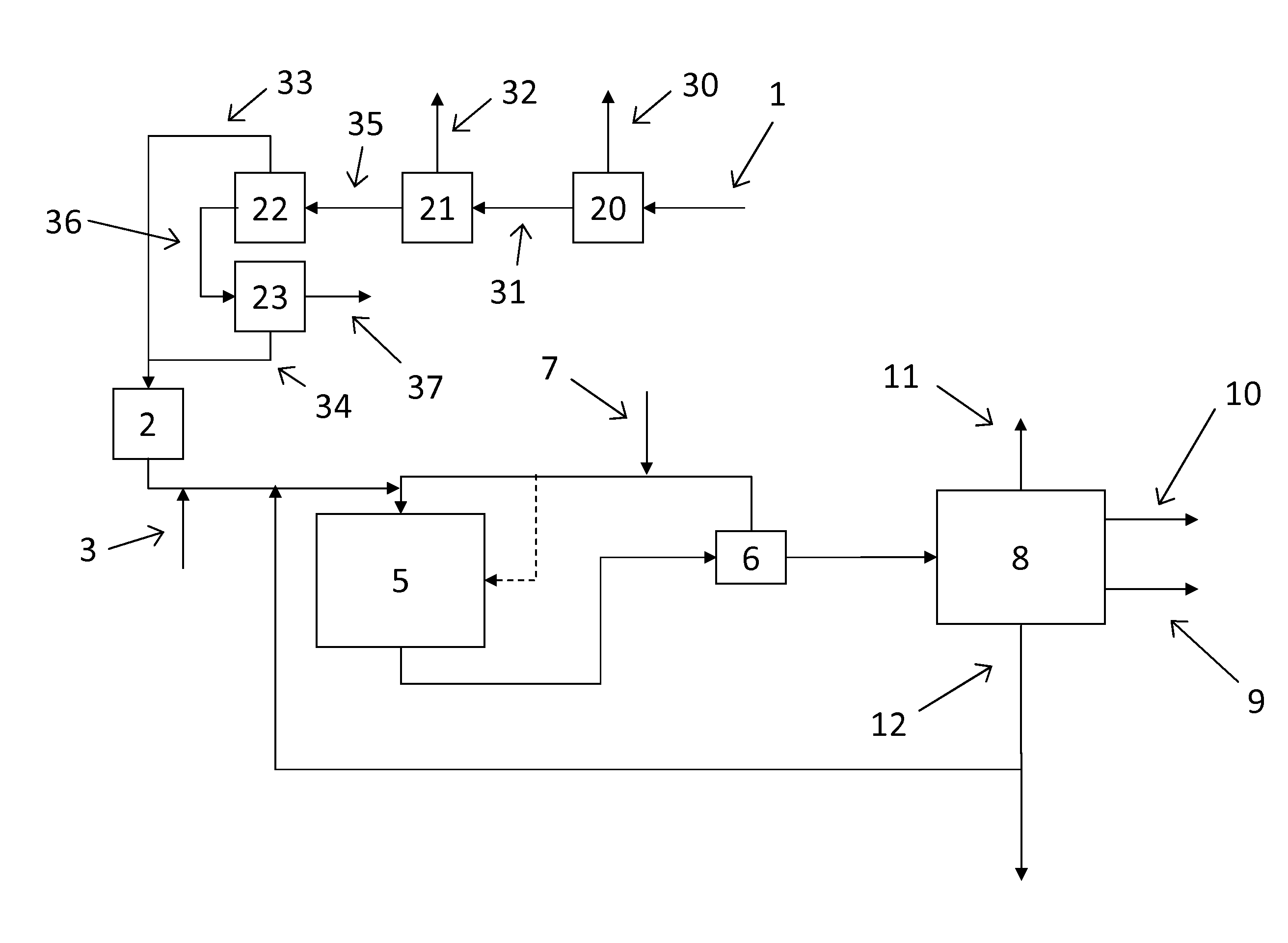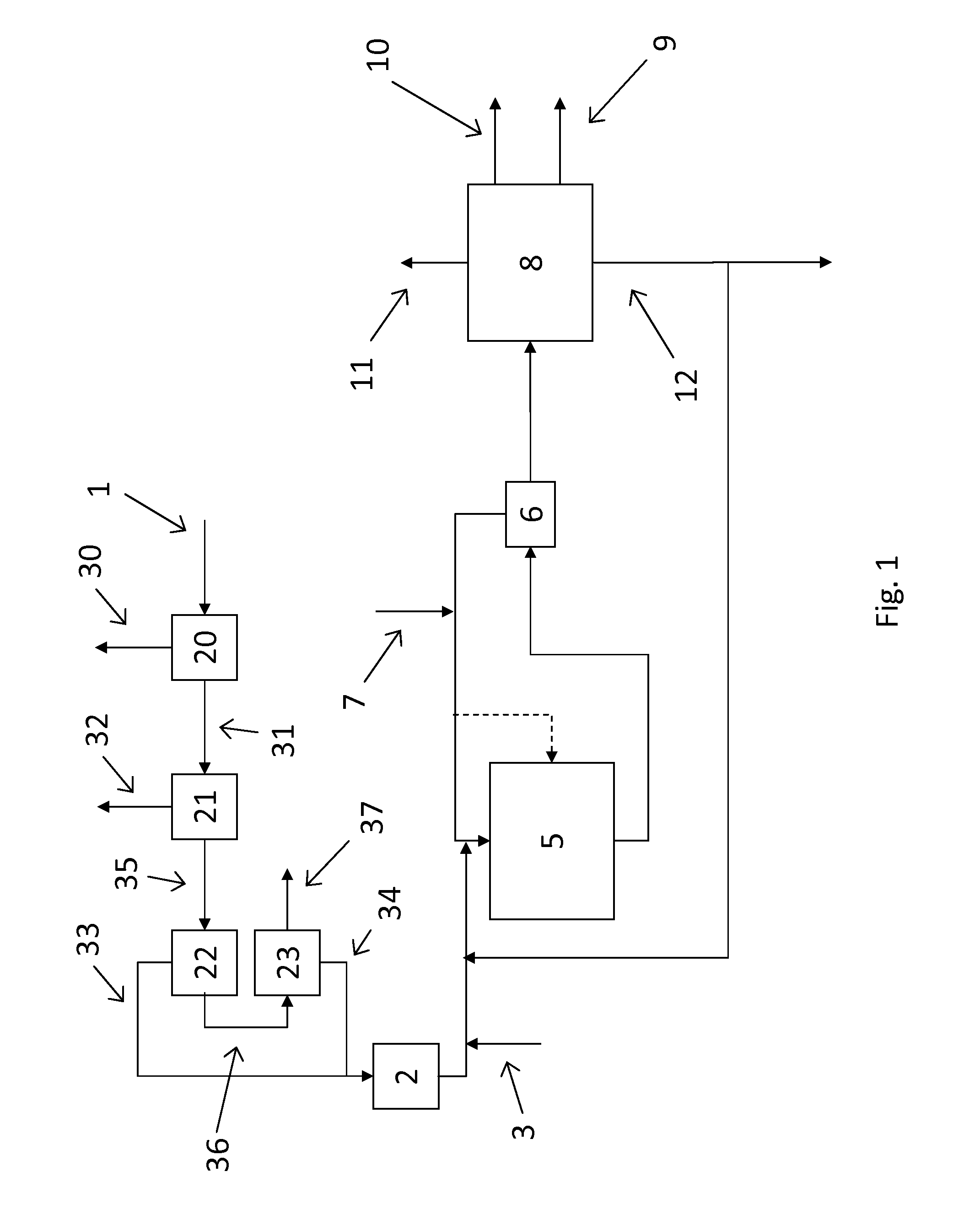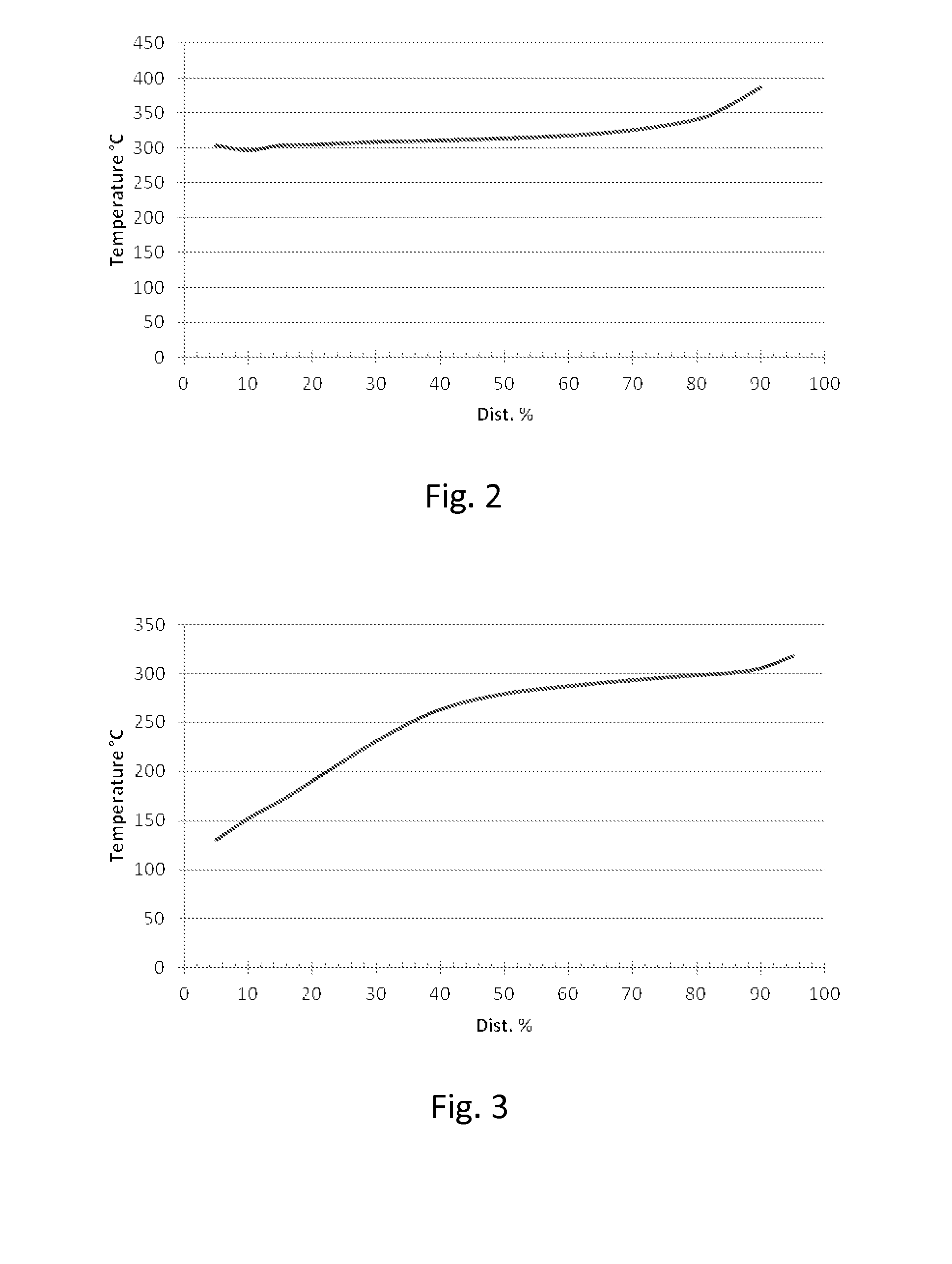Process for purification of biological feed material
a biological feed material and purification technology, applied in biofuels, organic chemistry, fuels, etc., can solve the problems of difficult purification of feed materials of biological origin to be suitable for feeding to a catalytic process, and blockage of catalyst materials used in the production process, so as to achieve the effect of avoiding the large amount of pitch and achieving the purified material from evaporation
- Summary
- Abstract
- Description
- Claims
- Application Information
AI Technical Summary
Benefits of technology
Problems solved by technology
Method used
Image
Examples
reference example 1
[0127]Crude tall oil is processed in a laboratory scale reactor packed with HDO catalyst containing NiMo / Al2O3. The reaction conditions are shown in Table 1
TABLE 1ParameterValueWSHV0.49H2 / CTO rate (Nl / l)1973Pressure (bar)90Temperature (° C.)369
[0128]The distillate of the liquid hydrocarbon product is bright in color and has the data shown in Table 2.
TABLE 2Yield resultValue (C. °)IBP247 53041029715304203053030940311503146031870326803418536090386FP61CP+16CFPP+10
[0129]A distillation curve of the distillate is shown in FIG. 2.
[0130]The result obtained with the HDO catalyst alone are not satisfactory for fuel use because of its poor cold flow properties. The ratio of iso to n-paraffines is 0.5. A residue of 7% of the product does not distill at all at the temperatures used.
reference example 2
[0131]Crude tall oil is processed in a laboratory scale reactor packed with HDW catalyst containing NiW / Al2O3. The reaction conditions are shown in Table 3.
TABLE 3ParameterValueWSHV0.68H2 / CTO rate (Nl / l)1260Pressure (bar)80Temperature (° C.)369
[0132]The distillate of liquid hydrocarbon product has the data shown in Table 4.
TABLE 4Yield resultValue (C. °)IBP94 5130101521517020190302314026350279602877029380298853009030595317FBP333FP61CP−8CFPP−2
[0133]A distillation curve of the hydrocarbon yield is shown in FIG. 3.
[0134]The result obtained with the HDW catalyst alone has fairly good cold flow properties. The iso to n-paraffin ratio is 2.6. However, the yield of middle distillate product is not satisfactory.
reference example 3
[0135]Crude tall oil is processed in a laboratory scale reactor packed with a HDO and HDW catalyst. The HDO catalyst comprises 21 g of NiMo / Al2O3 and HDW catalyst comprises 6 g of NiW / Al2O3. The reaction conditions are shown in Table 5.
TABLE 5ParameterValueWSHV (h−1)0.6H2 / CTO rate (Nl / l)1310Pressure (bar)70Temperature (° C.)373
[0136]The liquid hydrocarbon product has the data shown in Table 6.
TABLE 6Value (C. °)Yield resultTotal hydrocarbonsIBP105 5148101731520120229302734029250299603037030980316853259034695393FBP398
[0137]The distillation curve is shown in FIG. 4. The curve indicates a good distribution of paraffinic hydrocarbons and a good middle distillate yield. However, the ratio of iso to n paraffins is about 1 and the cold flow properties of the middle distillate are not satisfactory for diesel fuel use. The residue comprises 1.6%.
PUM
| Property | Measurement | Unit |
|---|---|---|
| Temperature | aaaaa | aaaaa |
| Temperature | aaaaa | aaaaa |
| Temperature | aaaaa | aaaaa |
Abstract
Description
Claims
Application Information
 Login to View More
Login to View More - R&D
- Intellectual Property
- Life Sciences
- Materials
- Tech Scout
- Unparalleled Data Quality
- Higher Quality Content
- 60% Fewer Hallucinations
Browse by: Latest US Patents, China's latest patents, Technical Efficacy Thesaurus, Application Domain, Technology Topic, Popular Technical Reports.
© 2025 PatSnap. All rights reserved.Legal|Privacy policy|Modern Slavery Act Transparency Statement|Sitemap|About US| Contact US: help@patsnap.com



